LCI databases are crucial to making Life Cycle Assessments (LCA is the scientific method to measure the environmental footprints of products). LCI databases contain information on the average environmental footprint of most materials and processes used in our daily lives and national economies. They provide environmental data companies can’t or haven’t yet measured themselves yet. Enabling them to already start making LCAs!
In this article you learn:
- How LCI databases play into making LCAs
- Where databases come from – and who owns them
- Which databases are most used
- When to choose which database
The role of LCI data(bases) in LCA
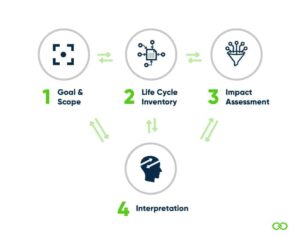
Image 1. The four phases in making a Life Cycle Assessment (LCA).
Remember the four phases of making an LCA (see Image 1 if not ? )? LCI databases come into play in Phase 2, the inventory analysis.
From inventory analysis to impact assessment
In the inventory analysis, we collect data: How much do we need of which raw material, energy input, or waste stream, to create our product or service? This is how we map our product system. You can do a recap on data collection in LCA here.
Then, we link the product system’s components to LCI data. LCI data tells us exactly which emissions, land use or resource depletion a product or process causes.
Our end goal in the inventory analysis is to obtain a life cycle inventory: telling us which emissions, land use, or resource depletion our product system as a whole cause. We simply add up the LCI data of all sub-processes for this!
In LCA-phase 3 (Life cycle Impact assessment, LCIA), we take the raw data from the inventory, and translate it into environmental impacts, using a Life Cycle Impact Assessment (LCIA) method.
LCA, LCIA, LCI – confusing, we know!
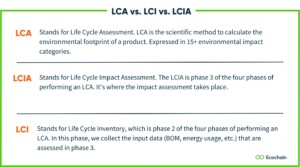
How to get LCI data
So, if we need LCI data for our life cycle inventory, how do we get it?
- We can measure LCI data ourselves – this gives us primary data, which makes our LCA the most accurate. But this is resource intensive!
- Alternatively, we can use existing “secondary” LCI data. This is used in almost every LCA somewhere*!
Secondary LCI data on an individual process is contained in a dataset. Datasets come from scientific research or industry research. But to obtain datasets, we don’t call our buddy at the local university- we search for them in LCI databases!
LCI databases are collections of LCI–datasets. These collections can contain anything from a handful to several thousands of datasets. Some databases are free, and some have paid access.
Now that you know what databases are, let’s have a closer look at them!
*You can mix both data types – using primary data as well as secondary data for other processes.
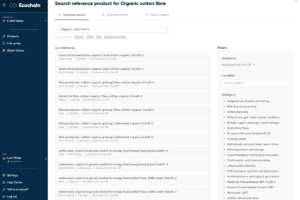
Providers of LCI-databases
Initially, databases were academic niche projects. But when LCA became a crucial tool for environmental innovation, national governments jumped on the bandwagon.
Many databases are specific to a national context and created through collaborations between governments, research groups, and national universities.
Some examples of LCI databases:
- NMD on the Dutch construction industry (see below)
- ELCD on Europe (see below)
- USLCI in the USA
- IDEA v.2 on Japan
- AusLCI on Australia
- SPINE@CPM on Sweden
- LCA-Food on Danish food
- Korea LCI database
- etc.
Industries, having their hand on the faucet of raw data – did not fall short in providing & selling their insights. E.g. the industry database with data collected by industry associations, and other sector-specific databases visible in Image 2.
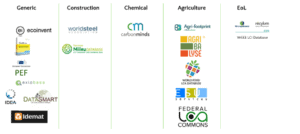
Another player to behold: The European Platform on Life Cycle Assessment is a host/ infrastructure for LCI databases. It has a global scope and a platform for ILCD or PEF-compliant databases. It also hosts individual datasets from small providers.
The bottom line is: anyone with reliable LCI data can create or contribute to a database.
The most-used LCI Databases
1. Ecoinvent
Ecoinvent is widely considered the largest, most consistent, and most transparent database on the market. It contains over 18.000 unique datasets, covering a wide array of products, services, and processes. You can pair it with almost every LCA method – such as the EF 3.0 method. Among others, Ecoinvent is implemented in Helix and Mobius, Simapro, GaBi, and open LCA.
2. GaBi
The GaBi–database contains about 15.000 datasets. Gabi describes itself as “industry-born” based on extensive stakeholder involvement and feedback from industry and third-party sources”. GaBi is LCA software as well as an LCI database, both owned by Sphera. Sphera and Ecoinvent both provide some datasets to the new PEF database (see below).
GaBi datasets are integrated into GaBi software and OpenLCA.
3. In Europe: PEF
The Product Environmental Footprint (PEF) is an LCA-standard and accompanying database initiated by the European Commission. The PEF aims to develop a harmonized EU-wide framework that ensure comparability between LCA results.
By using the PEF standard, method & database, LCA results from different studies become comparable. PEF datasets are available for specific product categories, adhering to the product category’s rules (PEFCR).
If you perform a PEF or OEF(Organizational Environmental Footprint) LCA, you get free access to some of the datasets that provide PEF/OEF-compliant data. You can find the overview of these datasets here. The access is managed through “nodes” on the European Platform on Life Cycle Assessment.
PEF datasets are compatible with the PEF method only. They are implemented in several LCA software, like Ecochain Mobius. The PEF’s predecessor database – the ELCD (v. 3.2 ) was discontinued in 2018, but is still available in Mobius.
4. In the Netherlands: Nationale Milieudatabase (NMD) on construction work
The NMD covers a wide range of building materials and construction-related services in the Dutch context. Its datasets adhere to the EN 15804+A2, the LCA standard on construction products.
The NMD is suitable only for studies following EN 15804 + A2. NMD v3.3 & 3.5, is currently available in Ecochain Mobius and Helix.
When do you choose which database?
You choose your LCA database based on the LCA target region (e.g. in the EU or US), LCA standard, and possible PCR (product category rule) you’ve chosen for your LCA study. For example, if you choose the PEF as your LCA standard, you will use the PEF method and PEF database. If you choose the EN15804+A2 as standard, you will use Ecoinvent and the EN15804+A2 database. Finally, if there’s a Product Category Rule for your product, you follow its instructions on the LCA method and accompanied database.
In the infographic below you find the steps to choosing a standard, method, and database for your LCA study.
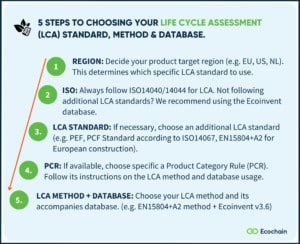
Image 4. How to choose your LCA standard, methodology & database.
Conclusion
LCI databases are extremely useful to patch the holes in our LCI data. Databases need to be chosen wisely, in accordance with your studies’ goal and scope. Ecochain’s LCA software makes it easy to switch between the most relevant databases for the European, Dutch, and US contexts.
Make your first LCA today. Read more about our easy product LCA tool Mobius here.
References
- Further reading on data collection for LCA
- Further reading on primary vs secondary data
- PEF product category rules and associated datasets available here
- PEF database access
- Databases in Mobius and/or Helix
- GaBi documentation
- Shaked, S., Crettaz, P., Saade-Sbeih, M., Jolliet, O., & Jolliet, A. (2015). Environmental life cycle assessment. CRC Press.

